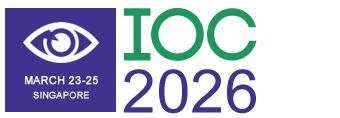Title : Automated system for analysis of oct retina images development and testing
Abstract:
Neovascular age-related macular degeneration (n-AMD) is a form of AMD that is responsible for most cases of severe vision loss. Anti-VEGF therapy, which is the gold standard for the treatment of this pathology, is accompanied by OCT monitoring. However, this process is hampered by the lack of methods for accurately quantifying OCT images. The aim of this study is to develop and evaluate the accuracy of the automated calculation of the quantitative characteristics of PED, SRF and IRF biomarkers. The study material included OCT B-scans of patients with n-AMD and pigment epithelial detachment who underwent anti-VEGF therapy from 2014 to 2021. OCT B-scans obtained from a CirrusHD-OCT 5000 Carl Zeiss Meditech device. The neural network for OCT image segmentation was trained on a dataset including 251 and 385 images from Experiments 1 and 2, respectively. The images were annotated by experts highlighting PED, SRF and IRF biomarkers using Labelme software. Data preprocessing included image resizing, normalization, and conversion to grayscale format. The data set was divided into training and validation. To segment retinal structures, the UNET architecture with the Adam optimizer and the Categorical Cross-Entropy loss function was used. The algorithm for calculating quantitative biomarker characteristics was based on edge detection using the method of Satoshi Suzuki and KeiichiA be. Testing data set for access the efficiency of system that included algorithms for segmentation and calculation of quantitative characteristics of biomarkers, included 241 images for which the length and height of the PED were measured by a physician using built-in software. Also, the image data were marked with respect to 3 anatomical treatment outcomes: attached PED; non-attached PED; PED tear. The developed method for processing OCT images made it possible to segment the biomarkers PED, SRF and IRF with high accuracy. The segmentation model shows the best results for PED (0.9), but also shows good accuracy for SRF and IRF (0.72 and 0.69) with increasing number of training data in experiment 2. Automated algorithm for calculating quantitative characteristics of biomarkers on the test set data from patients with n-AMD showed no statistically significant difference when comparing measurements with a physician. The study also showed that the attached and non-attached PED groups were statistically significantly different regarding the height, extent and area of the PED. In addition, IRF area may also be a predictor of PED tear, since its values are statistically significantly different for groups 2 and 3. Thus, automated segmentation and calculation of biomarkers can achieve performance comparable to an ophthalmologist in assessing the quantitative characteristics of biomarkers in cases of neovascular macular degeneration.
Audience Take Away Notes:
- Explain how the audience will be able to use what they learn?
The audience will learn about the methodology of development and evaluation of an automated method for quantifying biomarkers in optical coherence tomography (OCT) images of neovascular age-related macular degeneration (n-AMD) patients. - How will this help the audience in their job?
This presentation will provide valuable insights for ophthalmologists and researchers, helping them improve the assessment and treatment outcomes of n-AMD patients by utilizing an accurate quantitative approach. - Is this research that other faculty could use to expand their research or teaching?
This research may be of interest to other faculty looking to advance their research or teaching in the field of ophthalmology and medical image analysis. - Does this provide a practical solution to a problem that could simplify or make a designer’s job more efficient?
The method utilizes a neural network with U-NET architecture, achieving high accuracy in measuring these biomarkers and demonstrating its potential to improve the assessment of therapy outcomes in n-AMD patients. - Will it improve the accuracy of a design, or provide new information to assist in a design problem?
It will provide new information to access the problem of morphometry measurements of retina - List all other benefits.
Transferring routine work from a doctor to a secondary medical office. Reduce research time by up to 50%. Help in interpreting OCT data, increasing confidence in diagnosis, adding second opinion. Additional data analysis tools for morphometry. Reducing the number of repeat studies.




